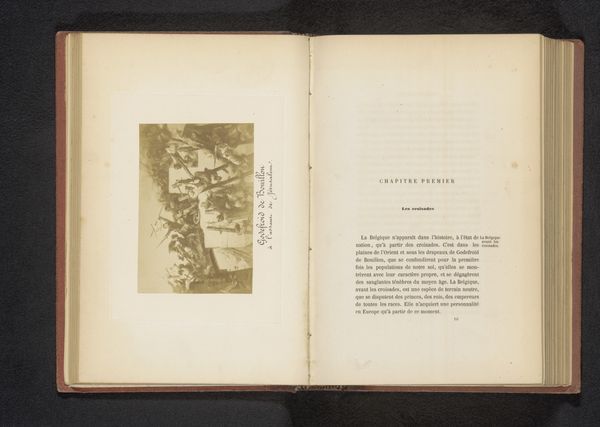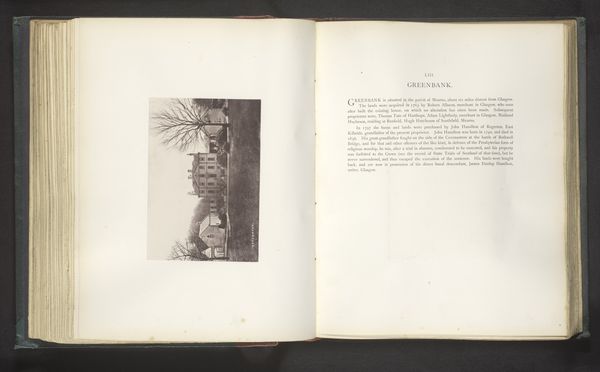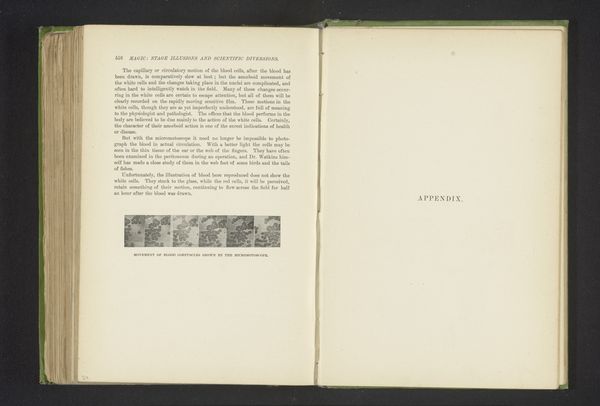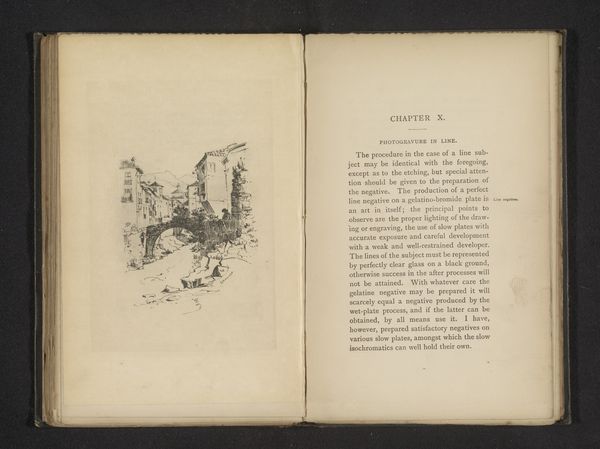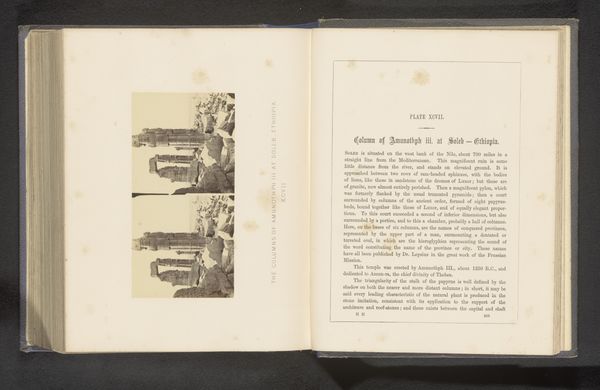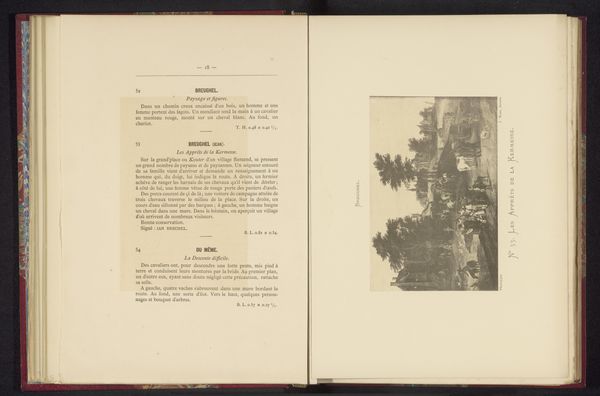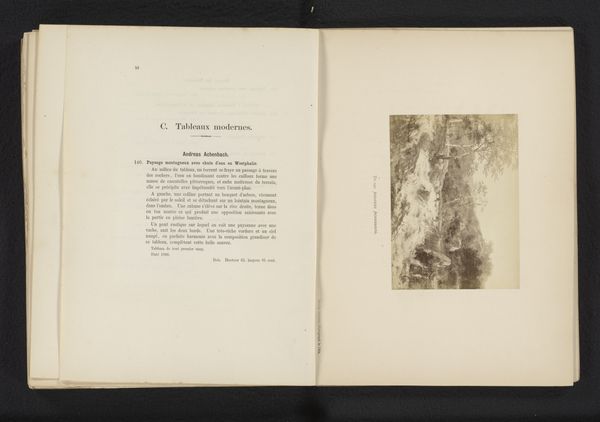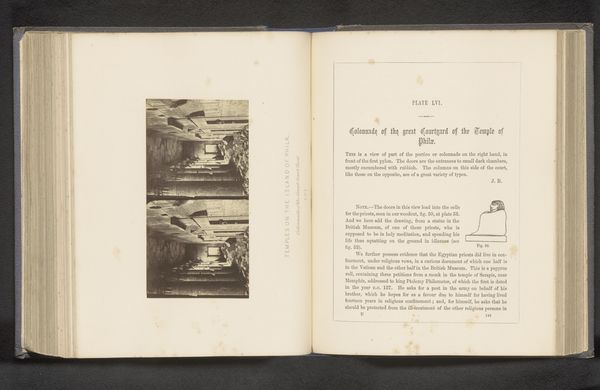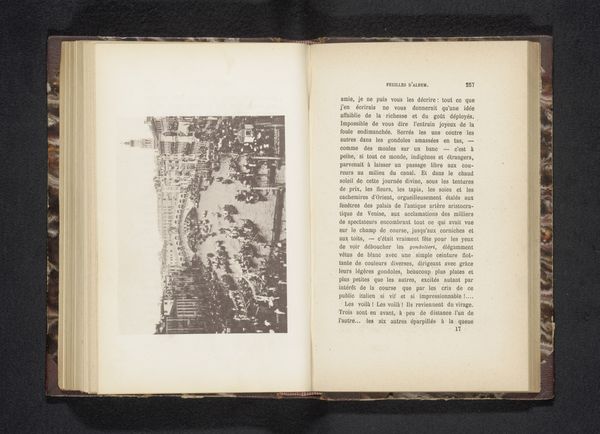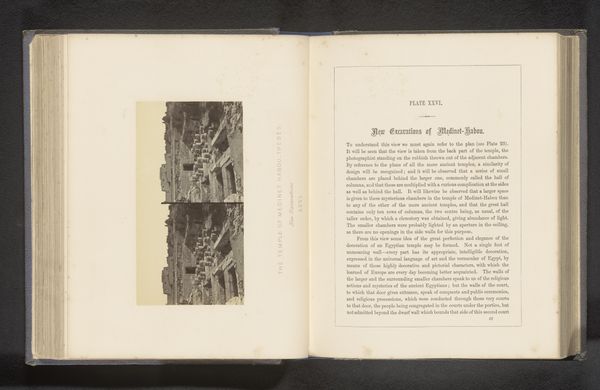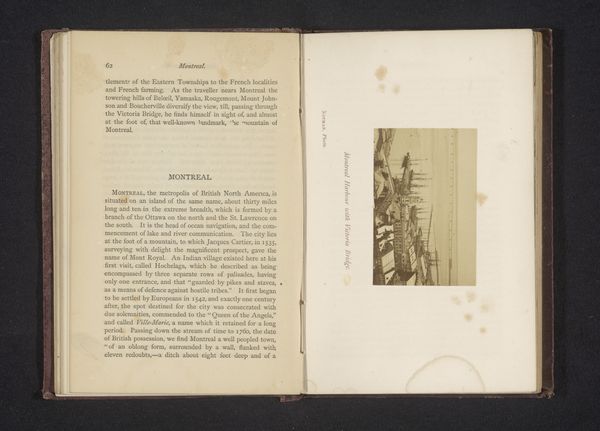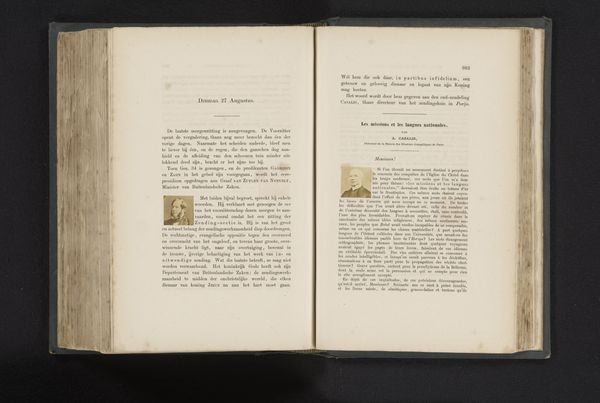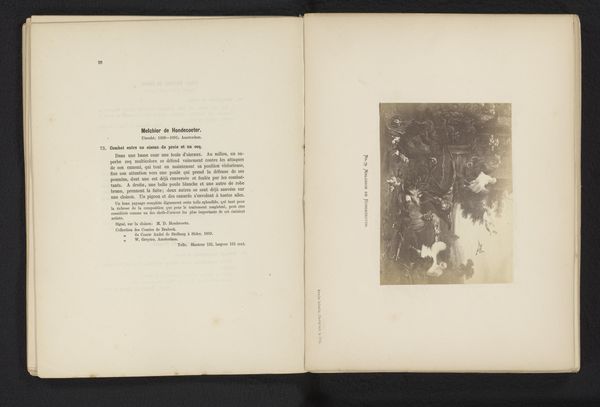
print, photography
# print
#
book
#
photography
#
history-painting
Dimensions: height 99 mm, width 67 mm
Copyright: Rijks Museum: Open Domain
Curator: Here we have a photographic print from before 1877, titled "Monument voor Johann Bernhard Basedow in Maagdenburg," housed here at the Rijksmuseum. It's an image within a book, open to a page about the history of gymnastics, actually. What are your first thoughts? Editor: Well, it’s pretty melancholic. I see this aged, sepia-toned photograph of what looks like a gravesite, shrouded somewhat in shadow. There’s a stark fence, almost a cage-like enclosure, which gives me a feeling of… confinement. Is this about someone who didn’t live so freely? Curator: In a way, yes. The monument commemorates Johann Bernhard Basedow, an educational reformer and a key figure in the Philanthropinist movement, which emphasized practical and physical education. The open book connects him to gymnastics because he saw it as vital to holistic learning. Editor: So, this isn’t just a grave marker, but a symbol of his educational philosophy. The bars, though, still trouble me. They read as barriers to his ideas or perhaps the limits even the most radical reformers face? It's curious to juxtapose revolutionary ideas with what seems like eternal restraint. Curator: That's an interesting observation. The fence could symbolize the structures that Basedow’s educational methods challenged. Or, more plainly, perhaps the limits placed on individuals in general, even those trying to advance societal progress. There is also the tree with leaves. The growth implied seems to contrast the immobility of a monument... Editor: Right, like life and death locked in a strange conversation. Plus, seeing this photograph reproduced in a book, layers another layer of memory. It transforms the physical memorial into something that exists primarily as an idea, reshaped by each reader's interpretation. I imagine its effect during the 1870s would've been different... Curator: Absolutely. This book provides both historical record and artistic interpretation. A tribute, preserved through print. In a way, it makes his legacy less a fixed "monument" and more an ever-evolving set of meanings. Editor: Which I guess returns to his idea about education being transformative. The man is gone, but the questions he raised, represented by this picture, are still asking to be considered.
Comments
No comments
Be the first to comment and join the conversation on the ultimate creative platform.
